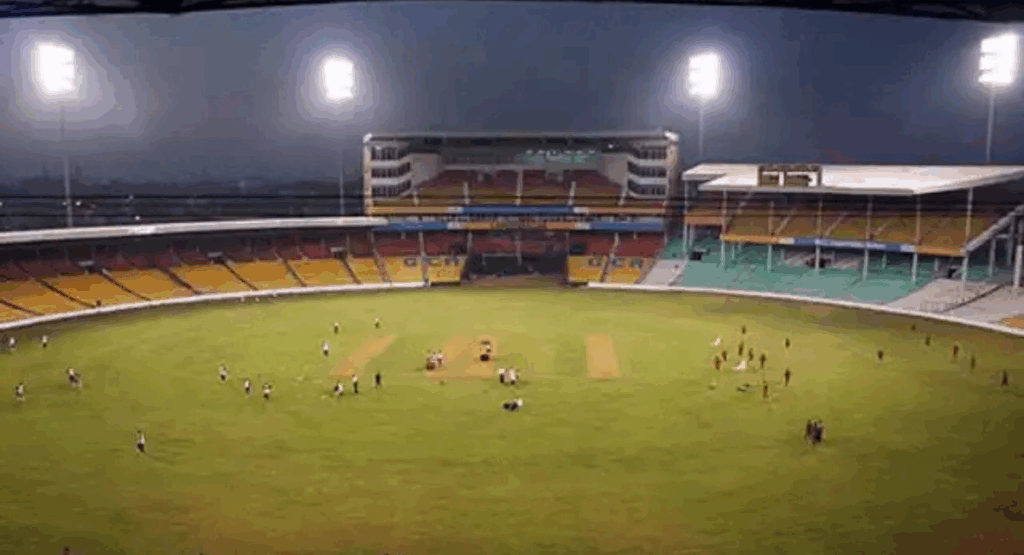
The India vs West Indies Test Pitch report reveals an exciting contest ahead at the Narendra Modi Stadium in Ahmedabad. Groundsmen have rolled out a surface that looks lively at the start. The fresh grass promises early bounce and carry. Fast bowlers may find seam movement in the opening overs, and batters will need to stay cautious.
India vs West Indies Test Series 2025 Venue
- IND cs WI, 1st Test: Narendra Modi Stadium, Ahmedabad – October 2-6
- IND vs WI 2nd Test: Arun Jaithley Stadium, Delhi – October 10-14
The fixtures for the ICC World Test Championship 2025-27 are set to begin at 9:30 am IST.
As the game progresses, the pitch usually flattens out. Historically, Ahmedabad offers batters long sessions to build runs after the first two days. The surface becomes firm, allowing stroke play and partnerships. However, as cracks widen and dryness takes over, spinners come into play. Captains will likely bring in their spinners around Day 3 to control the flow of runs and hunt for breakthroughs.
The weather, however, threatens to disrupt the rhythm of the match. Forecasts point to heavy rain on October 2, the opening day of the Test. A wet outfield or delayed start could frustrate players and fans alike. Cloud cover and moisture will hand bowlers an edge in the morning session. Teams must remain alert to such sudden shifts. Fortunately, conditions improve after Day 1, but intermittent showers remain possible during the Test.
Therefore, the toss becomes crucial. Captains will assess the cloud cover and grass on the surface before making a decision. Bowling first under overcast skies could hand seamers an advantage. On the other hand, batting after conditions settle may prove rewarding. Both India and the West Indies will weigh their strengths carefully.
India enters the contest with a strong pace attack and versatile all-rounders. Their fast bowlers thrive on early movement, and they can exploit the grass on the surface. West Indies, known for producing fiery quicks, also rely on their pacers to unsettle Indian batters in the first innings. If the pitch retains its greenness, seamers from both sides will dominate early exchanges.
Still, curators hold the final key. If they shave too much grass off the wicket, the surface will play flatter. Batters will find easier conditions to settle down. Once that happens, bowlers must work harder, relying on reverse swing or spin to create chances. This balance makes the Test intriguing, as strategies may shift session by session.
Batsmen need to adjust quickly. Openers must respect the new ball and avoid risky strokes. Middle-order players can capitalize once the ball loses shine. Bowlers, meanwhile, must stay disciplined. Fast bowlers should pitch the ball up and let the surface assist them. Spinners will look to exploit rough patches and footmarks as the match advances.
Another layer of excitement comes from the crowd factor. Ahmedabad’s Narendra Modi Stadium, the largest cricket ground in the world, often witnesses huge turnouts. If the weather clears, fans can expect intense battles between bat and ball, fueled by lively support.
In summary, the India vs West Indies Test Pitch report sets up a thrilling narrative. Rain looms large on the opening day, with conditions favoring bowlers early. As the pitch evolves, batting will grow easier before spin comes into play in the later stages. Captains must use sharp strategies, players must adapt quickly, and fans should brace for a contest full of twists. This Test promises not only cricketing skill but also the unpredictability that makes the sport unforgettable.

